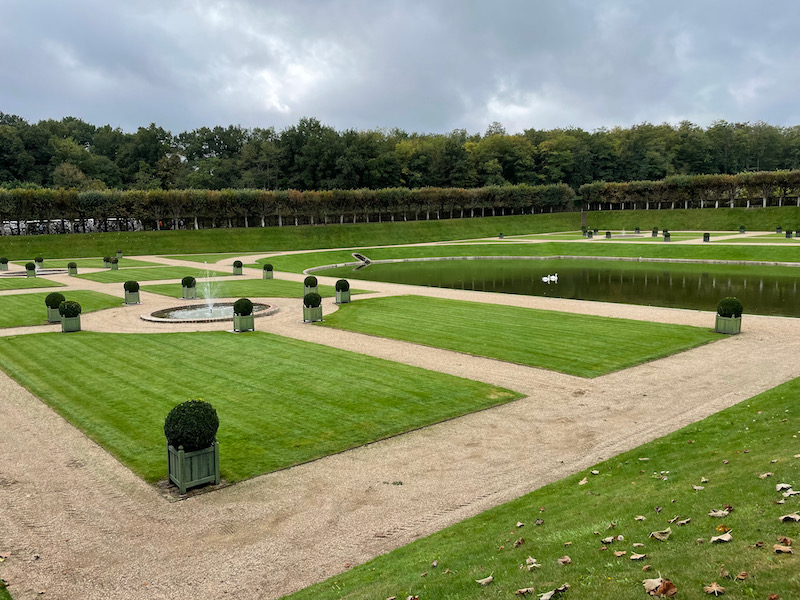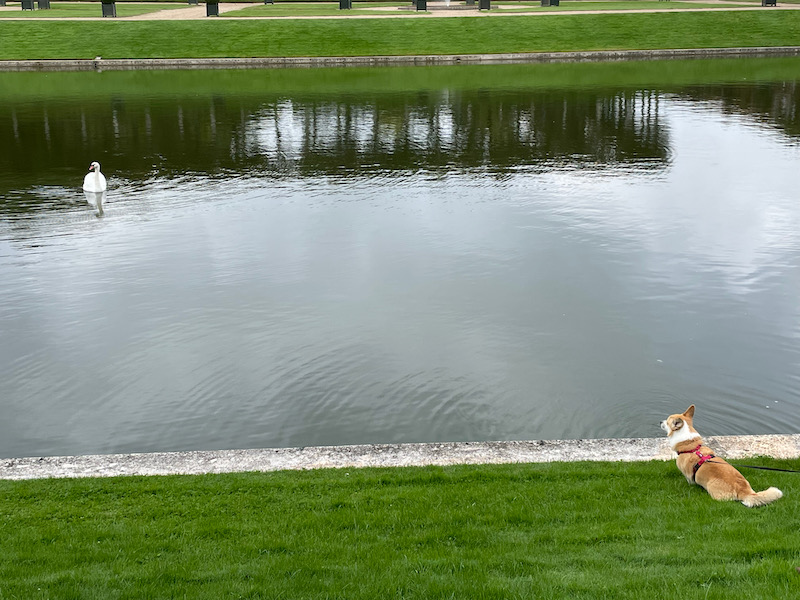Our Blog - Loire Valley Trip - Château Villandry, France
Villandry is known as a Renaissance-style residence. However, its history began 500 years earlier, in the Middle Ages, with the construction of a medieval fortress. The political situation in France in the Middle Ages was particularly unstable and competition between the medieval lords was fierce. The need to protect people and property led to the emergence of a new architectural model: the stone castle or defensive fortress. Here you can see the square-shaped tower topped with battlements that is characteristic of 11th century defensive constructions. This medieval keep was preserved and forms one corner of the U-shaped Renaissance château, which was built in 1536.
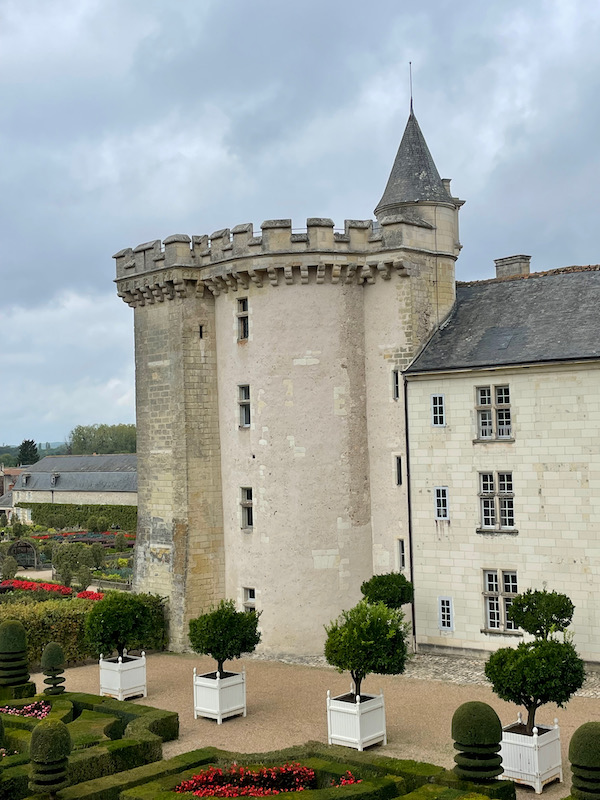
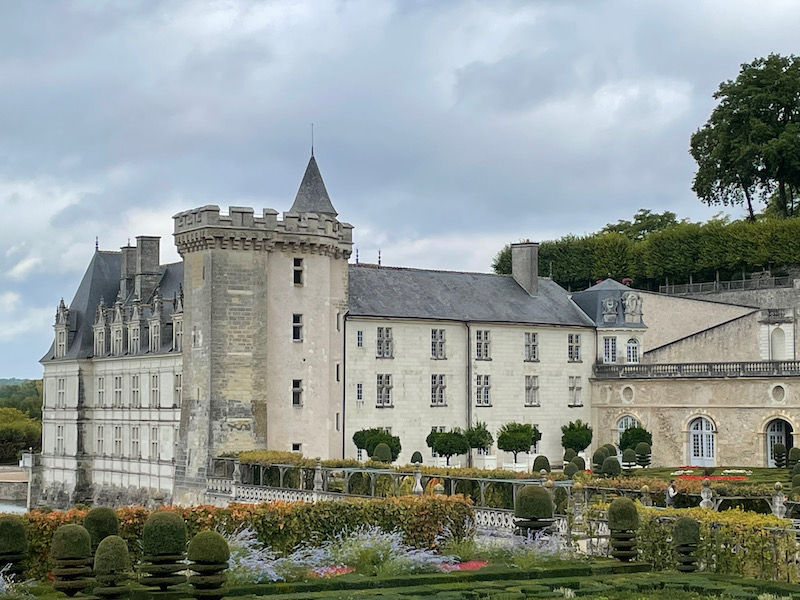
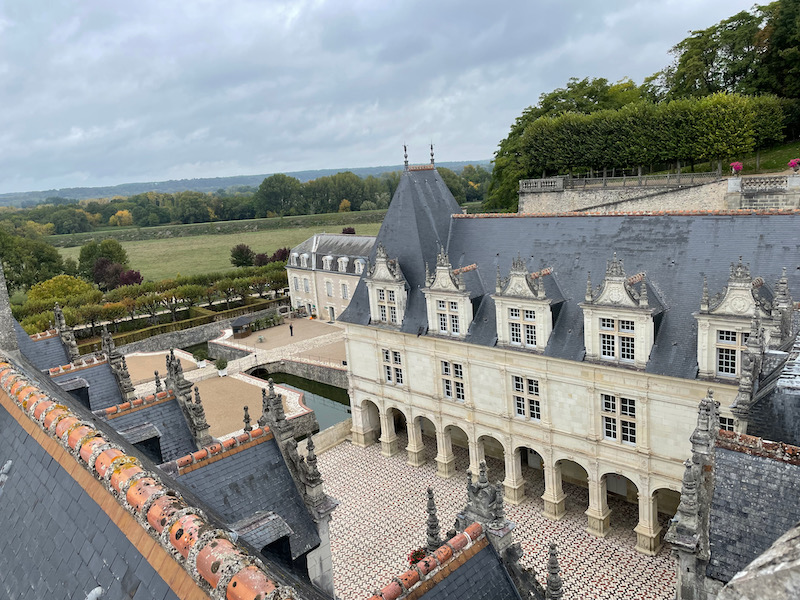
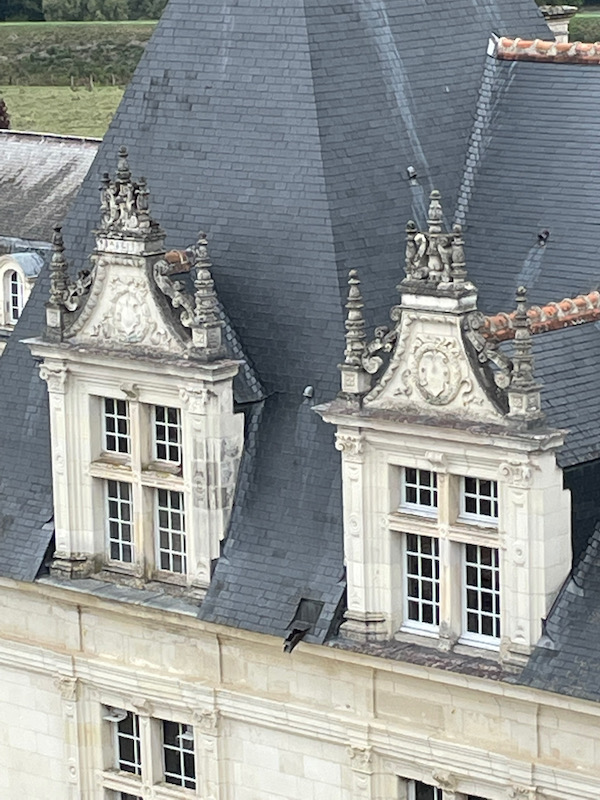
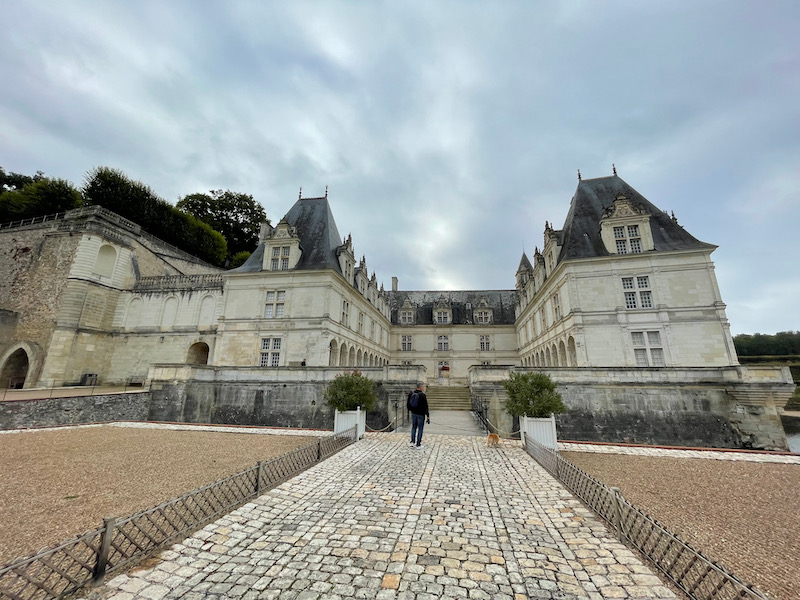
Here is a nice model of the entire property. The castle looks fairly small in comparison to the world-famous gardens, which is probably what the château is most known for. There are multiple different sections of the Renaissance gardens, including a water garden, ornamental flower gardens, and vegetable gardens. After being confiscated during the French Revolution, it was bought in 1906 by Joachim Carvallo and his wife Ann Coleman (heiress to the Coleman steel fortune) who renovated the chateau and the gardens. It is actually still owned by the Carvallo family with the current owner, Henri, being the great-grandson of Ann and Joachim. If you are interested in knowing more about the renovations, there is a story on Google Arts & Culture on it.
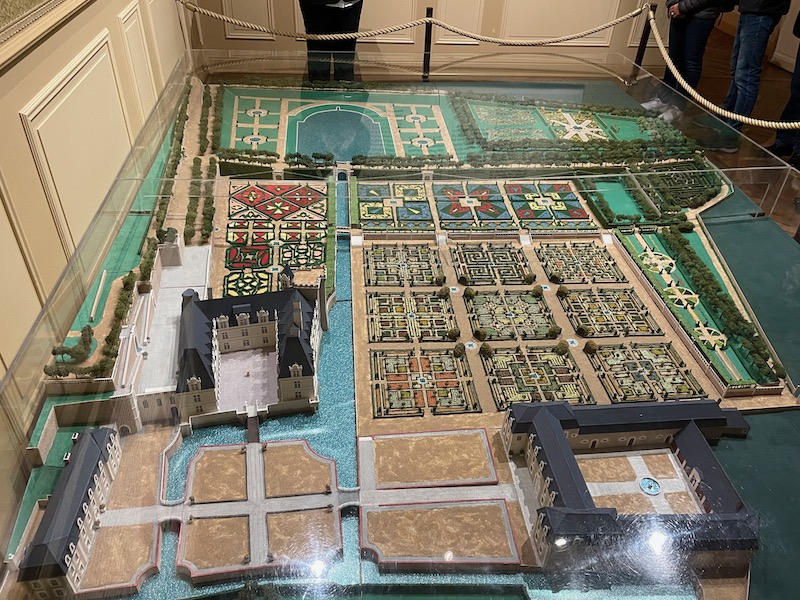
You can go through a set of rooms, most of them decorated in the style of the 19th and 20th centuries (depending on the room). Notice that most of the beds have curtains, which kept in heat in the winter. In the 2nd picture, you can also see the bathtub on the right-hand side, that looks like a chair with a sheet over it. We had seen this in various other château's as well, where the individuals would meet with guests while sitting in the tub, the sheet and/or a piece of wood covering most of the private parts.
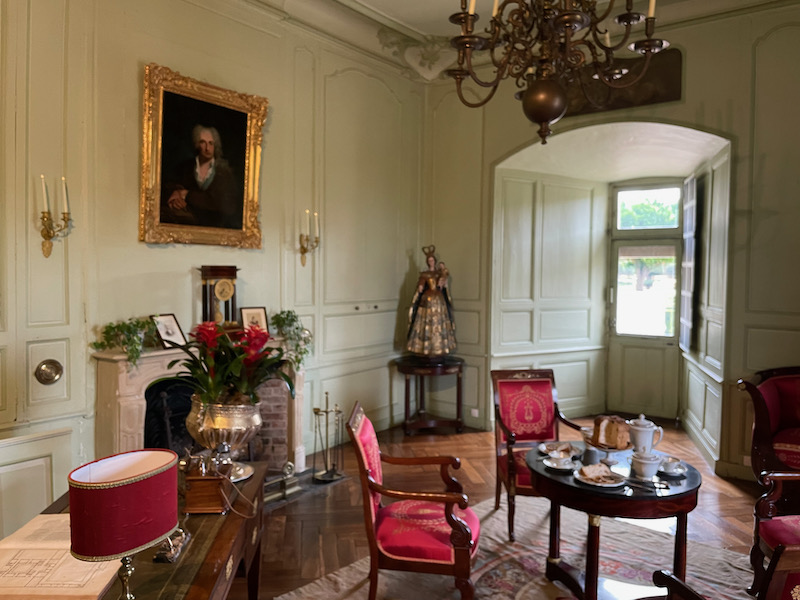
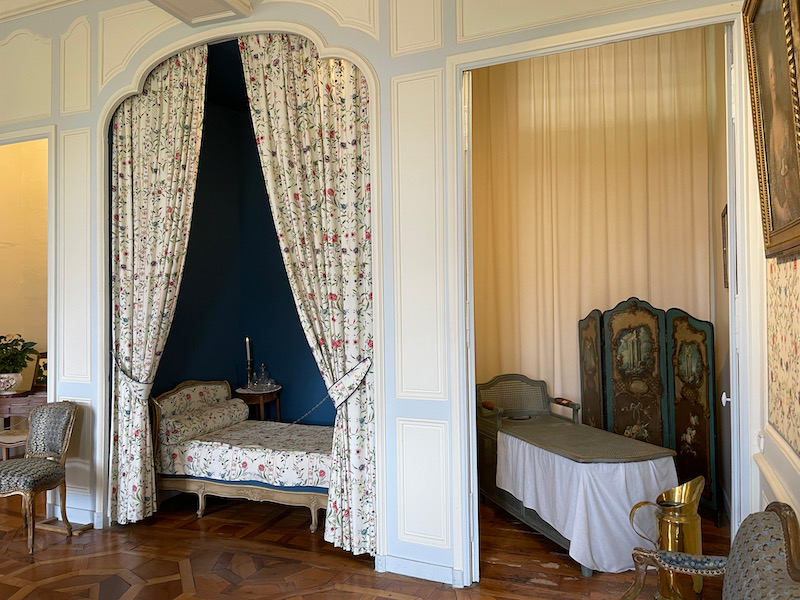
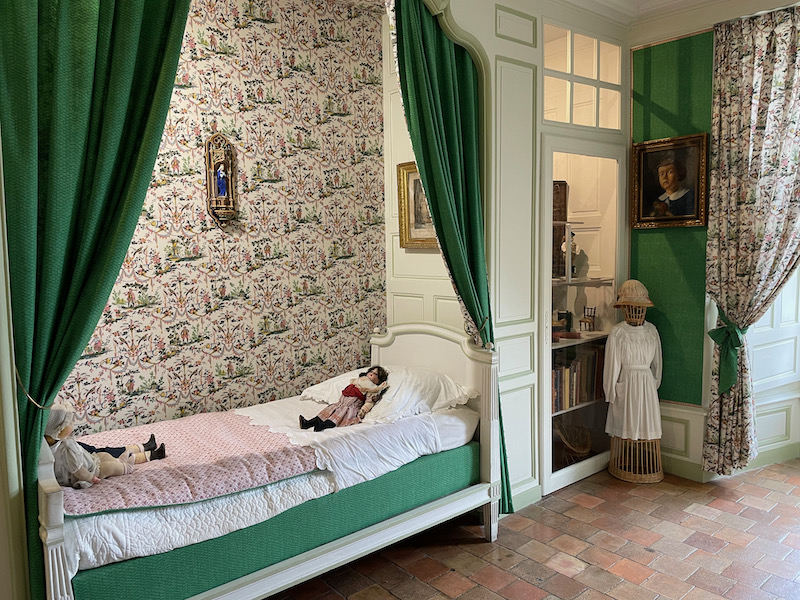
Napoleon I took over Villandry in 1807 and gave it to his younger brother Jérôme. The bedroom of Prince Jérôme Bonaparte is located on the first floor and the room dates from 1810-1811.
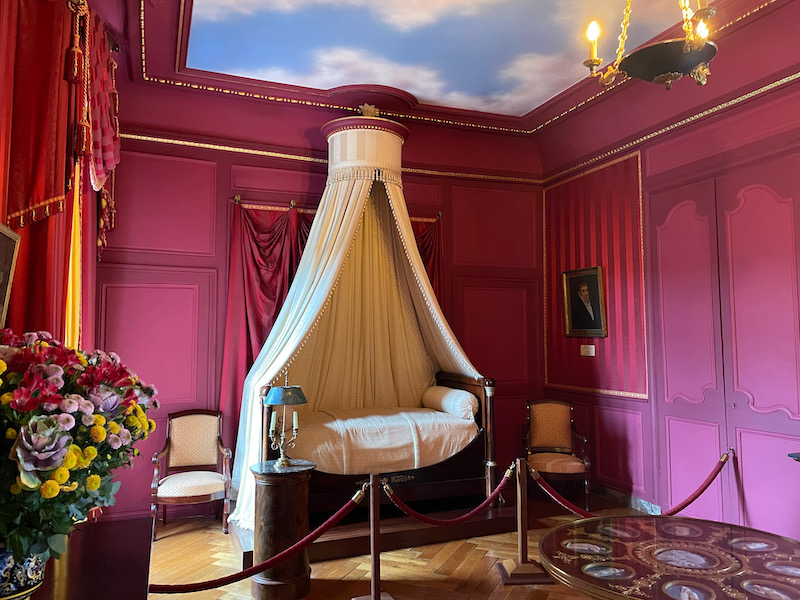
The dining room has pink panelling and a fountain, which serve as a reminder of the Provençal origins of the Marquis de Castellane who owned the estate in the 18th century.
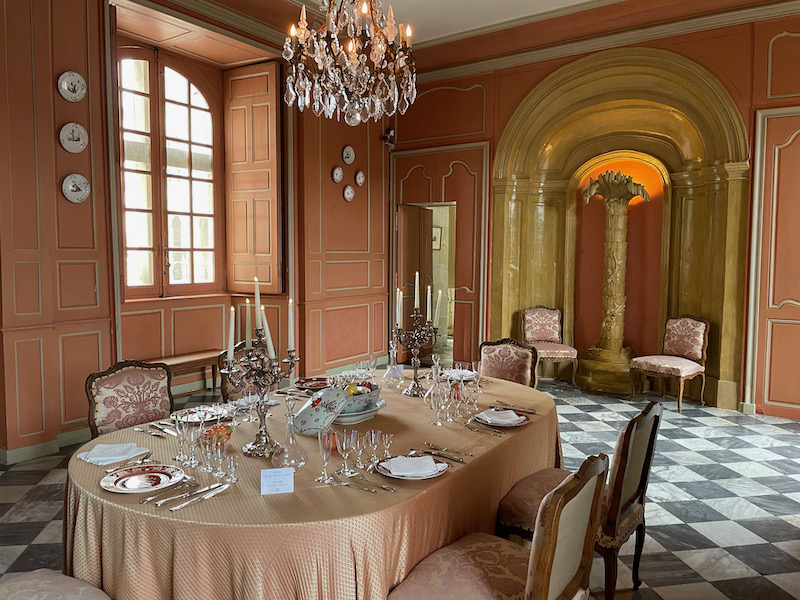
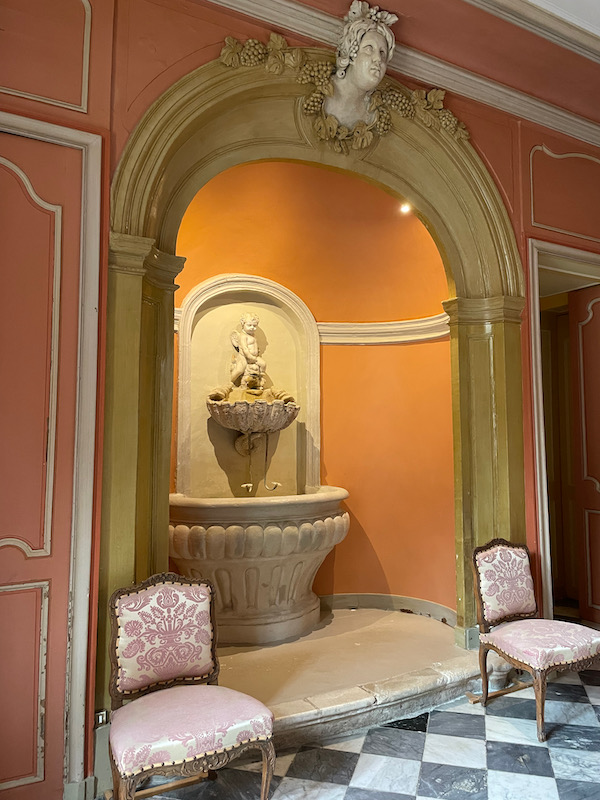
There are a few nice paintings, the first one called The Coronation of the Virgin. It is from the 15th century and is painted on cedar. The second is The Annunciation, also from the 15th century but on canvas.
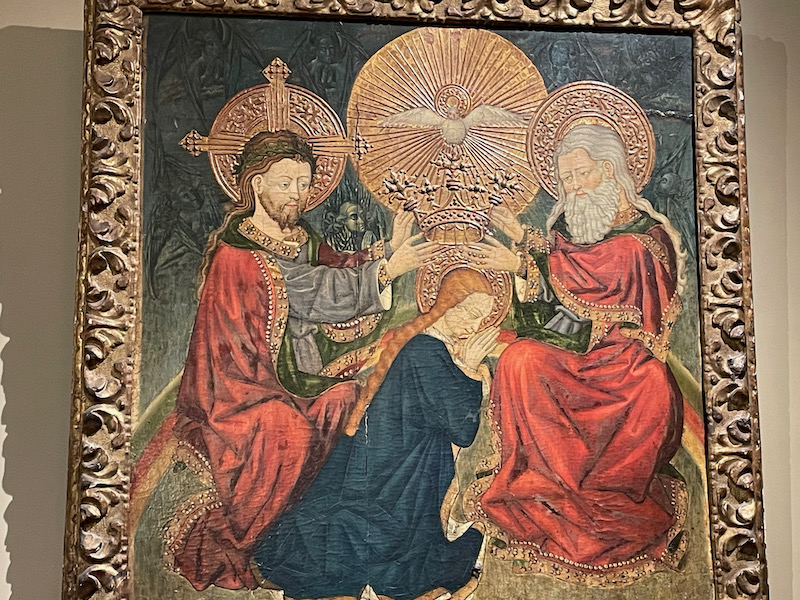
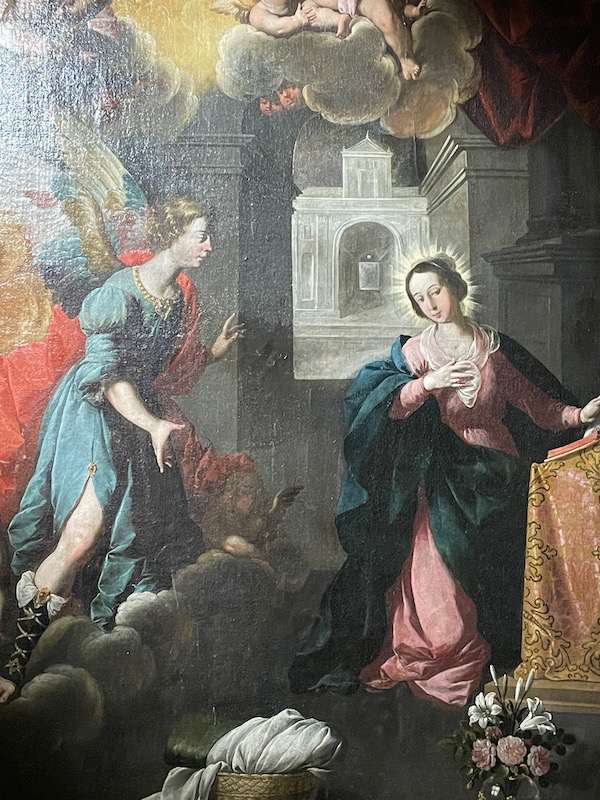
An interesting chess board in the oriental drawing room, which has an interesting design and history itself. The Hispano-Moorish ceiling was one part of a 15th-century ducal palace in Toledo, Spain. The palace was dismantled in 1905 and Joachim Carvallo bought one of the ceilings (from the “La Martina” drawing room) and had it brought to Villandry
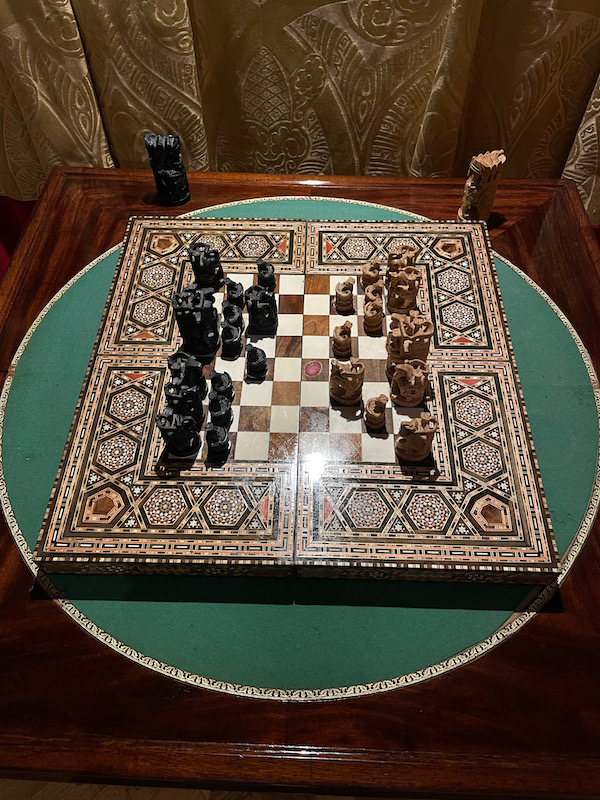
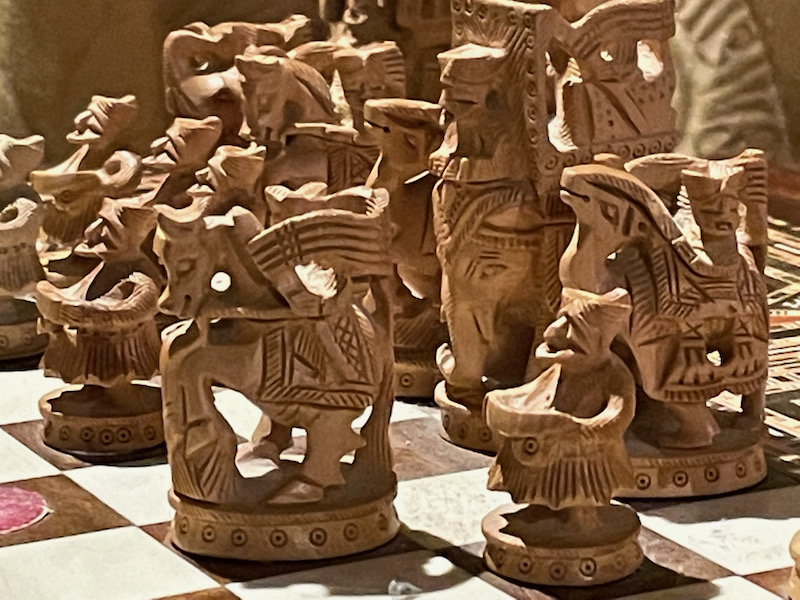
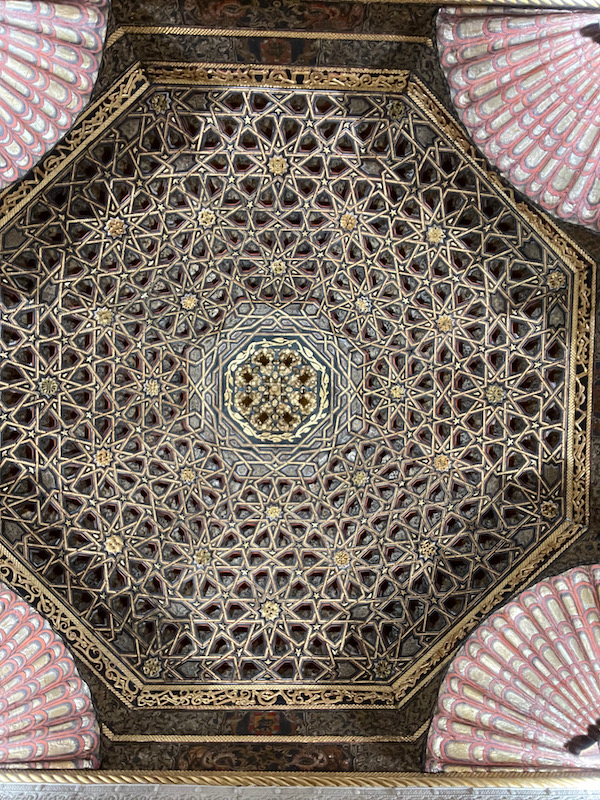
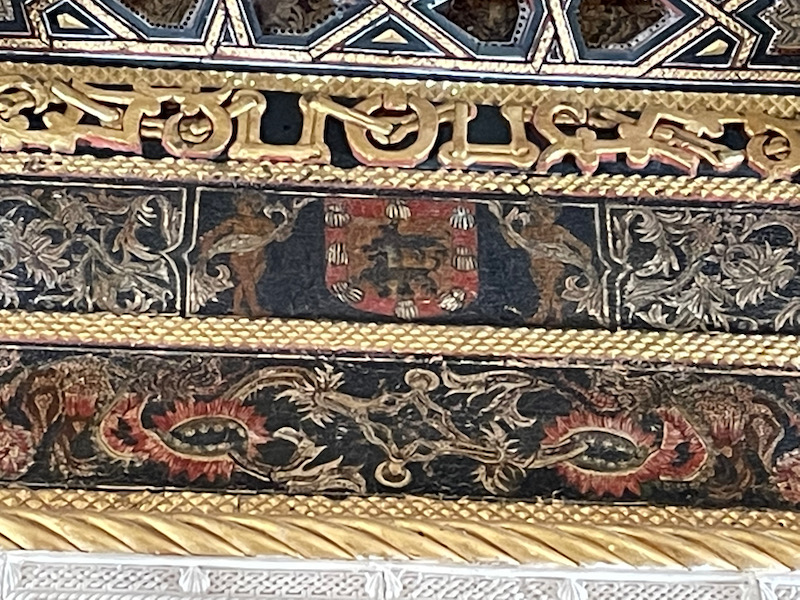
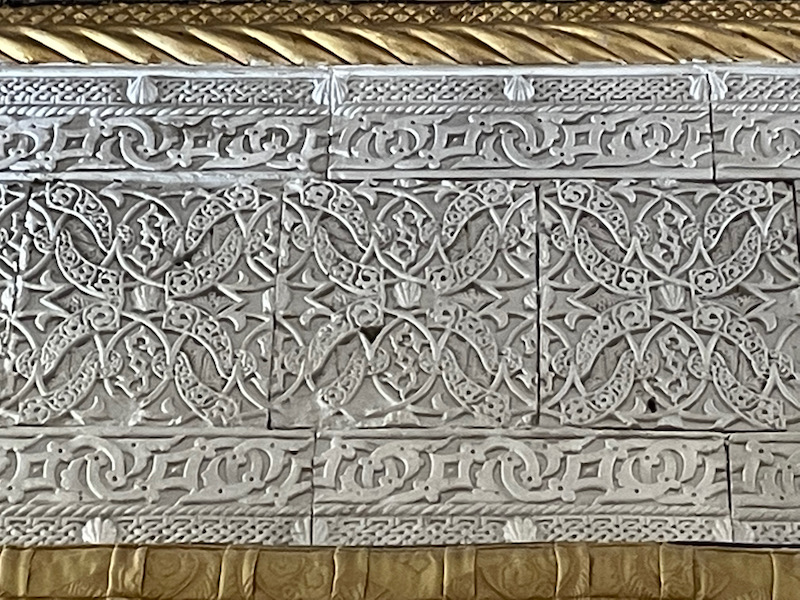
In the old section of the castle is the Francis I room. The room houses a number of different historical and artistic exhibits from the Renaissance period, including a tapestry of the Field of the Cloth of Gold depicting the meeting between Francis I and his rival, Henry VIII of England.
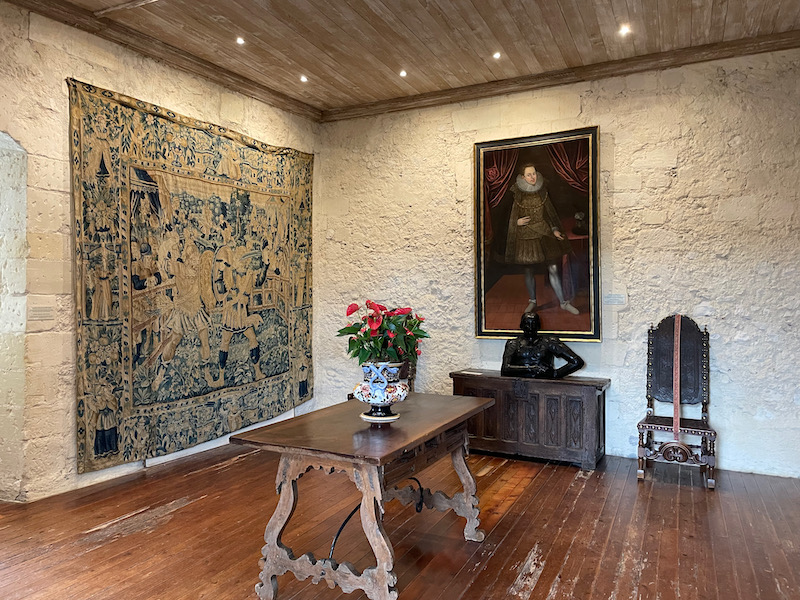
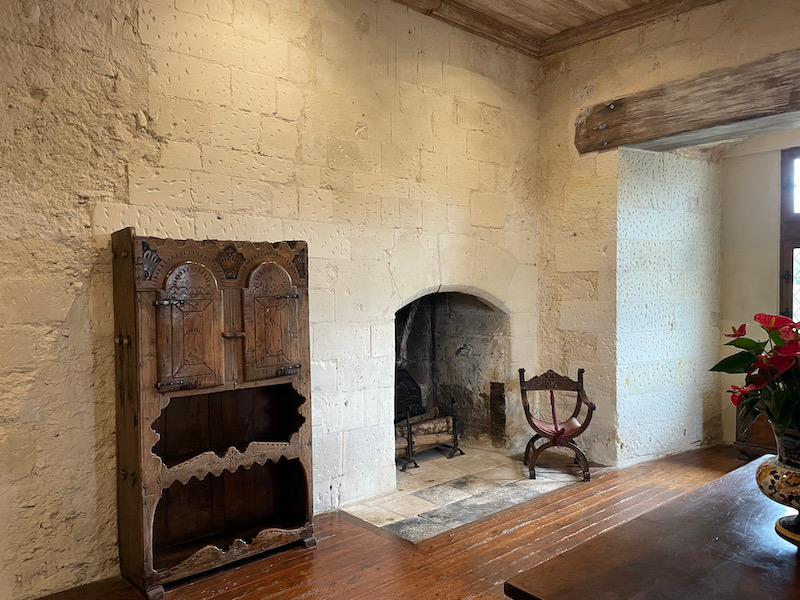
And now, to the gardens. There are several sections within the gardens. I tried to get a picture with an overview of several of the sections. On the left, with the pink flowers, is the ornamental garden. Then the water, which flows out to a small lake and the water garden. Moving to the center is the maze, and then in the right foreground is the start of the kitchen garden.
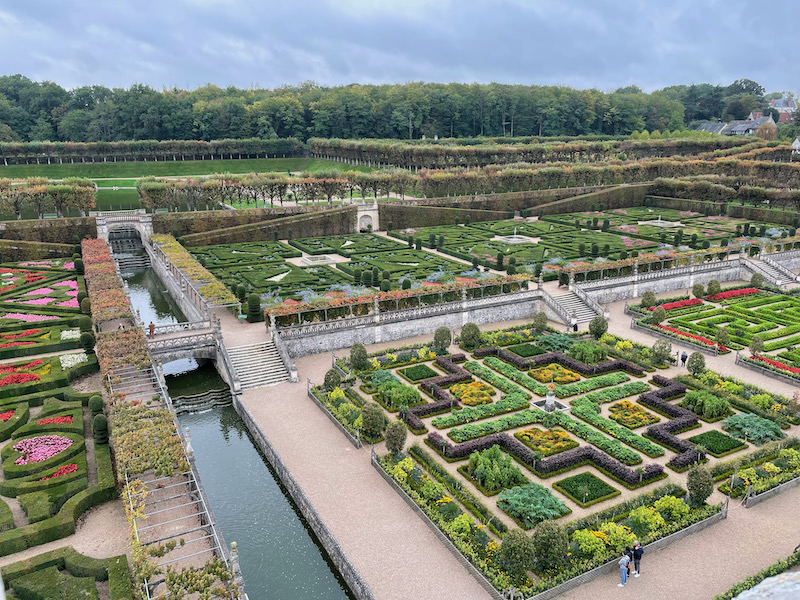
The "kitchen garden" is in a Renaissance style and consists of nine patches. Each of the patches is the same size but with a different geometric motif of vegetables and flowers. The patches are planted with vegetables in alternating colors – blue leek, red cabbage and beetroot, jade green carrot tops, etc. – giving the impression of a multi-colored chessboard. It also gets replanted a couple times a year based on the seasonality of vegetables. At the end of the summer, there were nice eggplants, pumpkins, and cherry tomatoes in the garden.
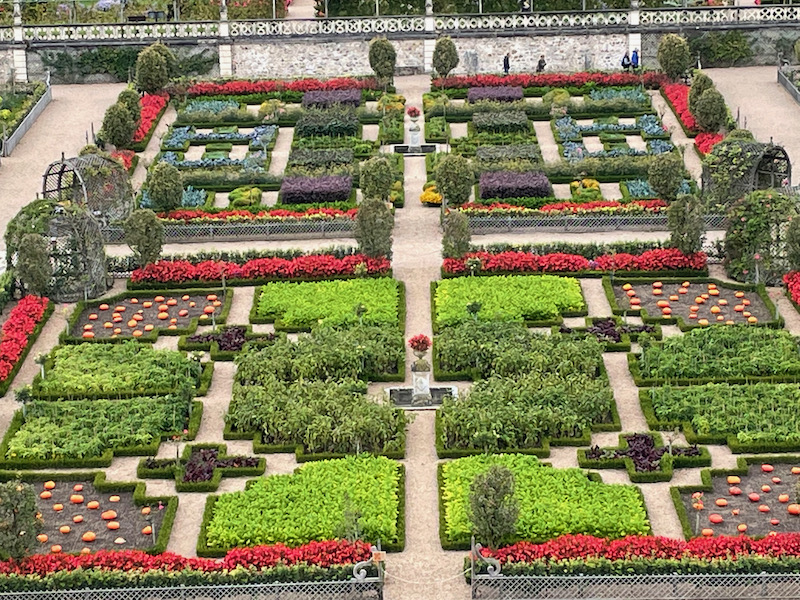
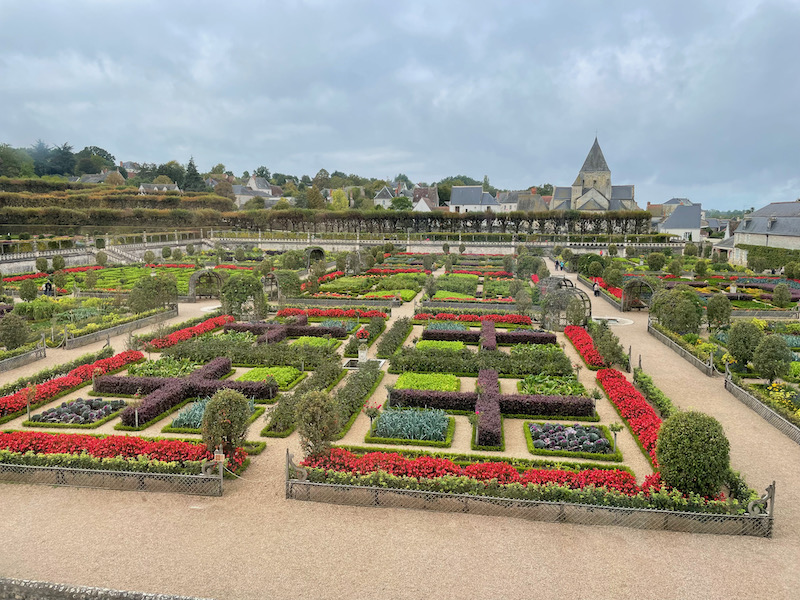
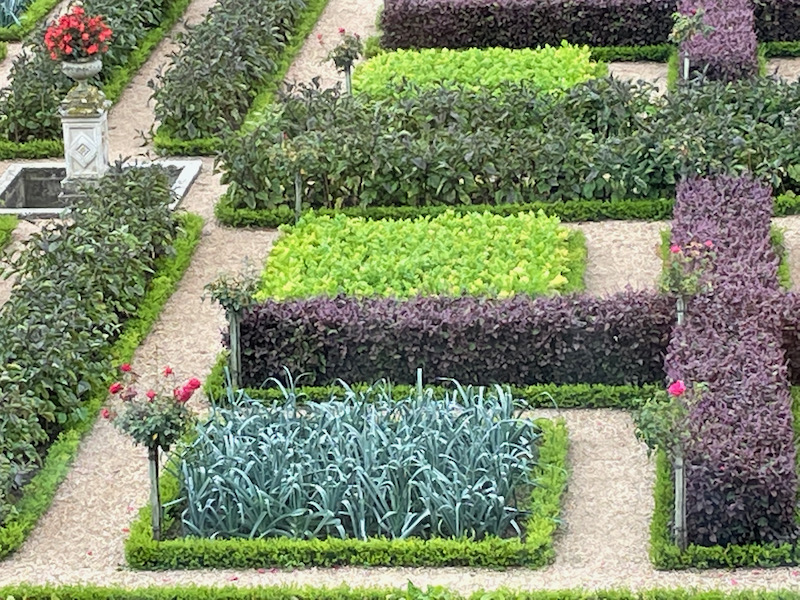
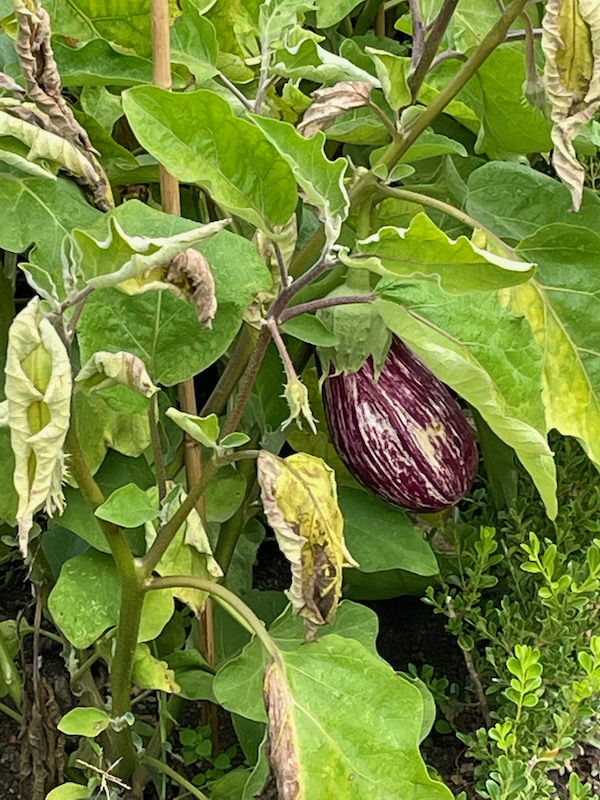
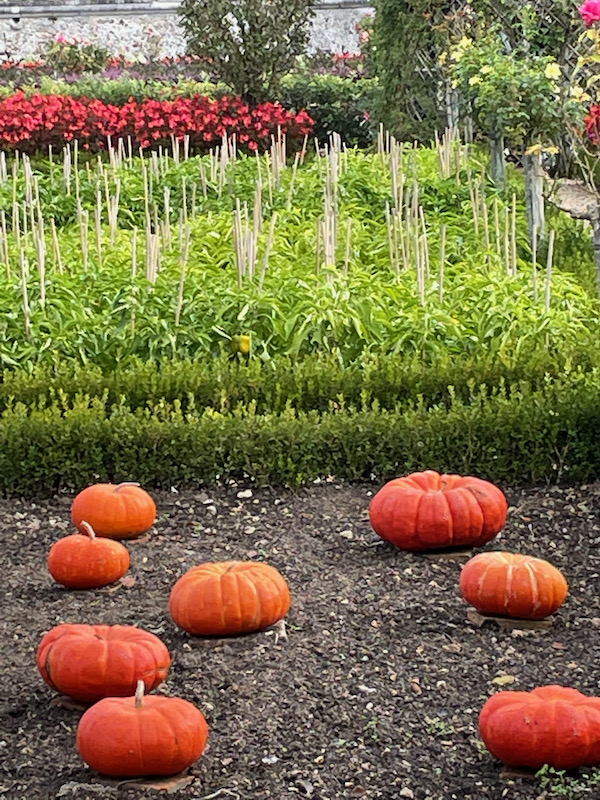
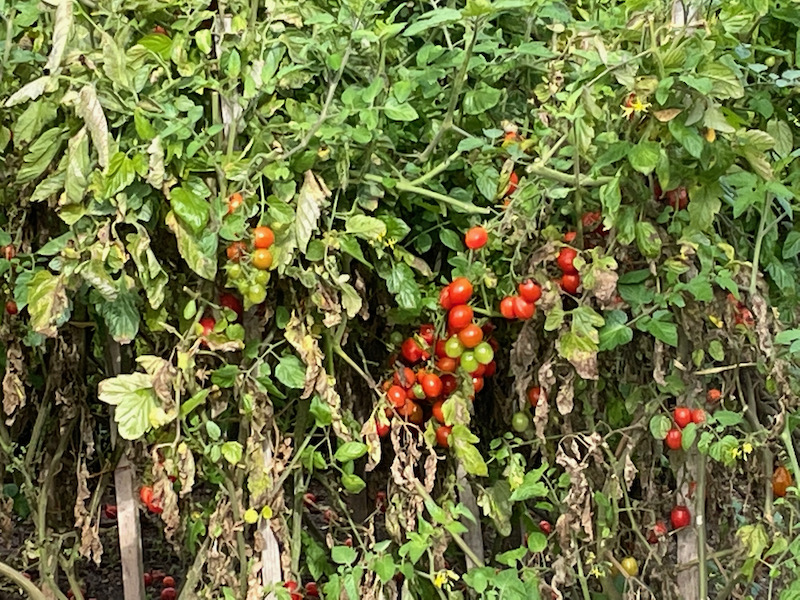
Just behind the chateau is the "ornamental garden", which has a couple different patterns in it. The "love garden" has shrubs in the shape of hearts, with pink flowers planted in the middle. There are also sections where you can make out various crosses (Maltese cross, cross of Languedoc, a Basque cross, and a Fleur-de-Lys) that make up the "cross garden".
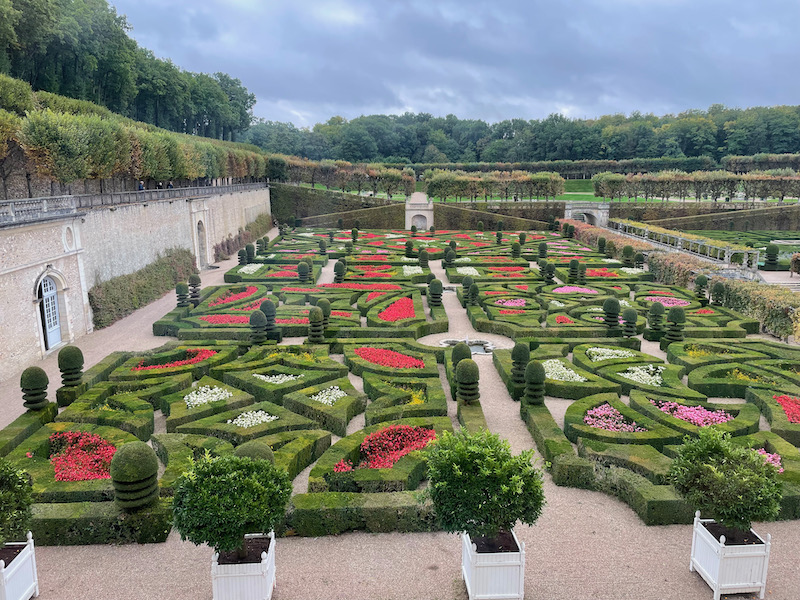
Lucy was enjoying her visit. Inside the château, she got to ride in the backpack that we bought her this summer, and then she was allowed just on a leash throughout all of the gardens. She especially liked checking out the swans in the Water Garden.

